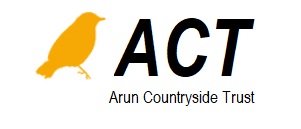A woodland in March is brimming with promise, buds bursting and bluebells pushing up through the earth. Bird song is on the up, and an explosion of life is afoot.
A woodland overtaken with rhododendron (Rhododendron ponticum) or cherry laurel (Prunus laurocerasus) is devoid of such delights; even full of despair. Both these species are non-native, having been introduced in the 18th and 19th centuries for their lush and evergreen foliage and attractive flowers.

Unfortunately this has come at a cost, for they possess characteristics enabling them to outcompete our native flora with disturbing ease.
Native species have co-evolved with predators, pathogens, and pests, and must allocate significant resources to keeping them at bay. A non-native species has left such troublemakers behind and, in many cases, these are not replaced in pastures new. Our native wildlife cannot cope with the copious quantities of cyanide present in cherry laurel or the armament of toxic chemicals in rhododendron. Unimpeded by munching insects and grazing deer, these shrubs can concentrate on growth and reproduction.
Both species readily set seed in the British Isles, with a large rhododendron bush capable of producing several million seeds in a season. Once it has taken hold it spreads exponentially and rapidly. We are talking decades (or less) not hundreds of years. It will kill everything apart from the trees already established above the thicket, and will arrest any woodland regeneration (so that’s the bit that is in the longer time frame as trees can live for hundreds of years). The soil biota dies - therefore no ground forage for birds, hedgehogs, badger and other mammals.
These shrubs, if left unchecked, can grow horizontally as well as vertically. Low branches that touch the soil produce roots, and roots, in turn, can produce new shoots, resulting in an ever-expanding dangerous front of an impenetrable jungle of growth. The large evergreen leaves cast a shade so dense that the woodland floor is deprived of even the slightest shard of light. No native plant can survive in this environment.
In a woodland invaded by these species, the myriad of invertebrates dependent upon the hundreds of hiding places provided by the former diversity of plants, shrubs, and trees, such as the interior of a stem or flower, the warmth beneath a carpet of leaves, the miniature jungle of moss or the space beneath the bark disappear. These spaces house communities, food webs, our native wildlife; they underpin life for those that are bigger – bats, dormice, birds. Worryingly, we tend not to notice such changes until the woodland falls silent.
Jackie Thompson
